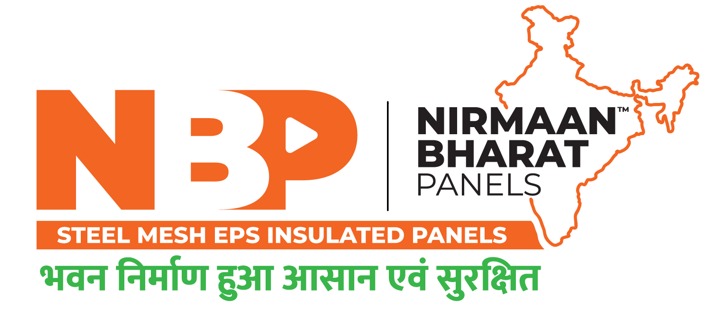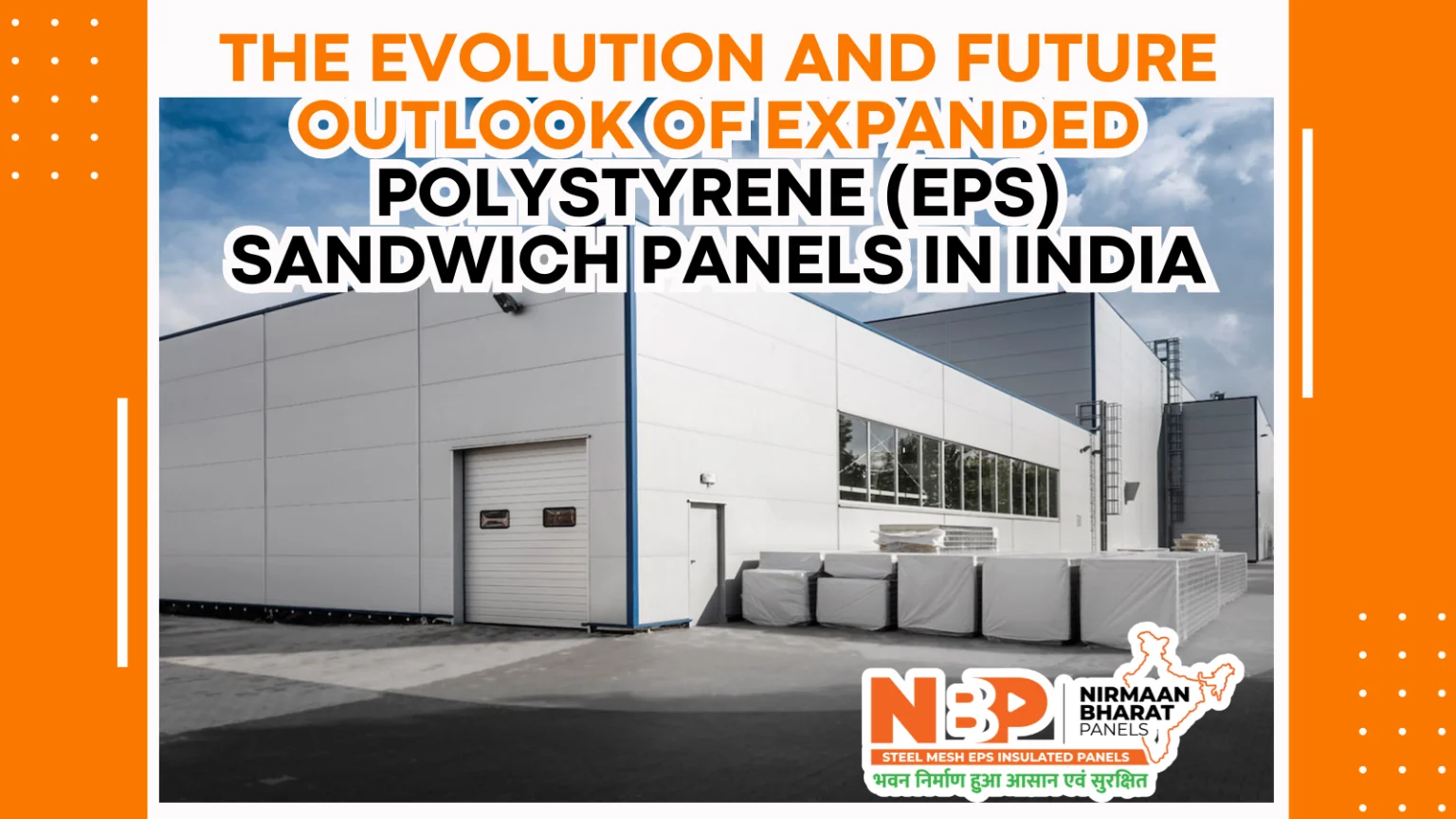The Expanded Polystyrene (EPS) Sandwich Panels market is set for impressive growth, fueled by technological innovations and expanding applications across diverse sectors. This analysis provides a detailed outlook for 2024 and beyond, with a particular emphasis on the Indian market.
Table of Contents
ToggleMarket Trends and Innovations
Sustainability Initiatives
- Recycled Materials: There is a rising trend in utilizing recycled EPS in manufacturing processes, aimed at minimizing environmental impact.
- Energy Efficiency: EPS panels are being designed to comply with stringent energy efficiency standards, enhancing green building certifications.
Technological Advancements
- Enhanced Fire Resistance: New developments are focused on improving the fire-retardant properties of EPS panels.
- Improved Insulation: Innovations in foam technology are improving both thermal insulation and soundproofing performance.
Customization and Aesthetics
- Design Flexibility: Panels now come in customizable sizes and finishes to meet both aesthetic and functional needs.
- Integration with Smart Technologies: Modern EPS panels can be integrated with sensors to monitor building performance.
Regulatory Compliance
- Building Codes: EPS panels are increasingly meeting evolving building codes and standards related to fire safety and energy efficiency.
- Environmental Regulations: There is a strong emphasis on adhering to regulations designed to reduce carbon footprints and promote sustainable practices.
Future Outlook (2032)
Market Growth Projections
The EPS sandwich panels market is expected to grow substantially, driven by increasing demand in the construction sector, especially for commercial and industrial buildings.
Innovative Applications
- Green Buildings: EPS panels are anticipated to become more common in green building projects, with advancements in materials and technology improving their sustainability.
- Prefabrication: The growing popularity of prefabricated construction methods is likely to boost demand for EPS sandwich panels due to their ease of use and efficiency.
Regional Developments
- Infrastructure Projects: Expansion in infrastructure projects across India, including transportation and public facilities, will contribute to market growth.
- Urbanization: Rapid urbanization and heightened construction activities in metropolitan areas will drive the demand for EPS panels.
Technological Integration
- Smart Panels: Future EPS panels may incorporate smart technologies such as sensors for energy management and structural health monitoring.
- Advanced Materials: Ongoing research is expected to introduce new materials with improved performance, including enhanced insulation and durability.
In summary, the EPS sandwich panels market in India is poised for robust growth, driven by technological advancements, sustainability trends, and evolving construction practices. Key industry players are focusing on innovation to meet increasing demand and comply with environmental and regulatory standards.
Polystyrene Panel Technology: Transforming Modern Construction
In the dynamic world of construction, where efficiency, sustainability, and cost-effectiveness are critical, polystyrene panel technology has become a key player. This technology, particularly through Expanded Polystyrene (EPS) and Extruded Polystyrene (XPS) panels, addresses significant challenges and offers practical solutions for contemporary building needs.
Understanding Polystyrene Panel Technology
Polystyrene panels are engineered from polystyrene foam, a lightweight and versatile plastic. The two main types are:
- Expanded Polystyrene (EPS): Created from beads of polystyrene that are expanded and fused, EPS offers excellent thermal insulation. It is utilized for wall cladding, roofing, flooring, and as infill panels in sandwich constructions.
- Extruded Polystyrene (XPS): Manufactured through extrusion, XPS features a closed-cell structure that enhances its moisture resistance and density. It is commonly used in foundation insulation and under slabs.
Key Advantages of Polystyrene Panels
- Exceptional Insulation Properties: Polystyrene panels provide superior thermal insulation, with EPS offering thermal conductivity of 0.035 to 0.040 W/mK and XPS offering slightly better resistance at 0.029 to 0.035 W/mK.
- Cost-Effectiveness: Their lightweight nature reduces transportation and handling costs, and their ease of installation lowers labor costs. Compared to traditional materials, polystyrene panels offer a more economical solution without compromising performance.
- Sustainability and Environmental Impact: EPS and XPS panels contribute to energy efficiency and reduced greenhouse gas emissions. Some manufacturers are also adopting recycling practices to minimize environmental impact.
- Ease of Installation: Polystyrene panels are easy to handle and install, with interlocking systems and compatibility with various construction methods, making them ideal for both new builds and renovations.
- Durability and Resistance: EPS panels resist moisture, rot, and decay, while XPS panels offer superior moisture resistance and withstand higher compressive loads, suitable for demanding applications.
Innovations and Future Prospects
- Advanced Insulation Materials: Research is enhancing the insulation properties of polystyrene panels, offering even better thermal performance.
- Fire Safety Improvements: New fire-retardant treatments and coatings are increasing the fire resistance of polystyrene panels.
- Sustainable Manufacturing: Efforts are being made to adopt eco-friendly production methods and increase the use of recycled materials.
Case Studies and Real-World Applications
- Residential Projects: EPS panels have been used to improve energy efficiency and indoor comfort in homes, leading to reduced energy bills and better air quality.
- Commercial Buildings: They are utilized in office and retail spaces for cost savings and improved thermal performance.
- Infrastructure Projects: EPS panels are used in roadways and bridges, benefiting from their lightweight and durable properties.
Polystyrene panel technology is reshaping modern construction with its efficiency, sustainability, and cost-effectiveness. Builders and developers should consider integrating this technology to achieve superior performance and reduced environmental impact.
The Potential of EPS as a Green Building Material
As urbanization accelerates and energy resources become scarcer, there is a need to innovate housing design and construction to cut costs, CO2 emissions, and enhance indoor comfort with minimal energy use. Expanded Polystyrene (EPS) sheets, made from small beads of polystyrene mixed with pentane as a blowing agent, are highly suitable for these needs.
Advantages of EPS in Construction
- Thermal Conductivity: EPS has a thermal conductivity of 0.032 to 0.038 W/(m·K), significantly lower than concrete, which helps reduce energy consumption.
- Cost Efficiency: EPS reduces the weight of structures by up to 35% compared to traditional concrete, lowering construction and material costs.
- Energy Savings: EPS embedded in reinforced concrete results in significant energy savings, reducing heating and cooling needs by 60-80%.
EPS Construction Methodology
- Fabrication & Casing: EPS sheets are encased in galvanized steel wire mesh and trussed for added strength.
- Assembling: EPS panels are assembled into structures with minimal shuttering, with concrete layers applied using various methods.
Current Scenario in India
Currently, EPS is used on external walls for insulation but does not significantly reduce construction costs. Implementing EPS in reinforced concrete can address this issue by improving disaster management, especially in flood-prone and storm-affected areas. EPS panels offer durability and efficiency, potentially reducing the environmental impact associated with traditional materials like cement and sand.
Market Outlook and Growth
The global EPS insulated panels market, valued at approximately USD 455.4 million in 2022, is projected to reach around USD 794.36 million by 2031, with a compound annual growth rate (CAGR) of 6.2% from 2023 to 2031. Key drivers include the expansion of cold storage facilities, e-commerce growth, government energy efficiency initiatives, and increased construction activity.
Regional Insights
- Europe: Leading the market due to residential and cold storage demand.
- Asia-Pacific: Expected to grow rapidly with rising green building awareness and construction activities.
In conclusion, the EPS market is set to expand significantly, driven by the need for energy efficiency, sustainable practices, and innovation in construction technologies.
Market Segmentation of EPS Insulated Panels
The EPS (Expanded Polystyrene) insulated panels market is a dynamic sector driven by innovations in building materials and increasing demand for energy-efficient solutions. Here’s a detailed breakdown of the market segmentation:
1. Types of EPS Insulated Panels
- Wall Panels: Used in residential, commercial, and industrial buildings for exterior and interior walls. They provide thermal insulation, soundproofing, and structural advantages.
- Roof Panels: Designed for roofing applications, these panels provide insulation and contribute to energy efficiency by reducing heat transfer through roofs.
2. End Users
- Construction: The largest segment, encompassing residential, commercial, and industrial buildings. EPS panels are used in new constructions and renovations to improve thermal performance and structural integrity.
- Non-Construction: Includes applications outside traditional building uses, such as cold storage facilities, transportation, and packaging.
3. Thickness
- Up to 100 mm: Suitable for applications where moderate insulation is needed. Common in residential buildings and certain commercial applications.
- 100 to 200 mm: Provides enhanced insulation and is often used in areas with higher energy efficiency requirements, such as commercial buildings and high-performance residential structures.
- Above 200 mm: Used in extreme insulation scenarios and specialized applications, including industrial buildings and cold storage facilities.
4. Region
- Europe: Leading the market due to stringent energy efficiency regulations and a strong emphasis on green building practices.
- Asia-Pacific: Anticipated to see the most rapid growth driven by heightened construction activity, accelerating urbanization, and growing awareness of energy-efficient building solutions.
- North America: Driven by advancements in building technologies and a focus on sustainable construction.
- Latin America and Middle East & Africa: Emerging markets with growing demand for energy-efficient solutions in construction.
Conclusion:
The (EPS) Sandwich Panels technology offers a promising solution for constructing earthquake-resistant buildings while providing thermal insulation and reducing construction costs. Its benefits extend beyond seismic safety to include energy efficiency and sustainability, aligning with global trends toward greener and more resilient building practices.
As the demand for energy-efficient and earthquake-resistant buildings increases, EPS technology is poised to play a pivotal role in shaping the future of construction.


